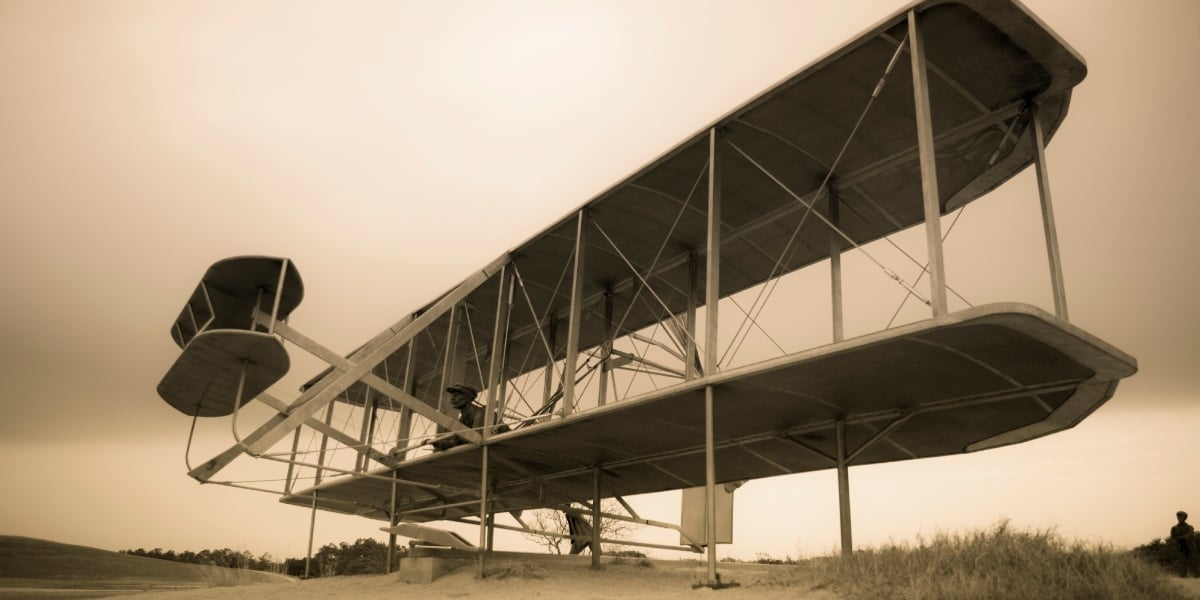The Power of the Free Market
Share
By Hillsdale College Online Courses July 22, 2015
The story of the first airplane shows the power of free market principles, and the exceptional quality of American entrepreneurship. Throughout history, where government subsidies fail, private enterprise succeeds.
The following video features Dr. Burton W. Folsom, Charles F. Kline Chair of History and Management at Hillsdale College.
Transcript:
Burton Folsom:
The invention of the airplane shows the remarkable rise of American entrepreneurship and shows America taking its place as a first-rate power in the world. It also answers the question: which is better to promote economic growth? Should we have the federal government subsidize an industry or should we leave it to private enterprise? In the case of the airplane, we decided to get the federal government involved and try to jump-start the invention of the airplane because we feared the possibility that the Germans, the French, or maybe the British may invent the airplane ahead of us.
We thought, "We got to get there quickly. Let's subsidize the best person we have and see if we can get the airplane invented." We subsidized Samuel Langley, the head of the Smithsonian Institution, to invent an airplane. He was a professor of astronomy. He had written the leading book on aerodynamics. He was head of the Smithsonian Institution. He seemed like the man for the job. The federal government gave him enough subsidy to experiment with two flights. He did this in Washington, D.C. In fact, he did it right on the Potomac River. He built a houseboat and his strategy was to launch his airplane like a catapult off the houseboat, and then through that launching, the engines would go, the airplane would fly and it would be a success.
His first experiment, the airplane was launched off the houseboat, went into the air, and crashed into the Potomac River, but he had enough money for one more. He tried it again. He said, "If I fine-tune it, it may work next time." He fine-tuned it. He launched the second airplane. Again, it went right into the Potomac River. No flight.
The Boston Herald suggested, "Professor Langley ought to give up airplanes and try his hand at submarines." The New York Times said, "It is so complicated, we won't see the invention of the airplane for another one million years." The New York Times was off. In nine days, after Langley's second flight, the Wright brothers invented the airplane, launched the first successful flight from Kitty Hawk, North Carolina, and they did so for almost one minute. They were in-air with a mechanized flight for almost one minute.
They improved on that, later went for half an hour, an hour. They were the inventors of the airplane. Two bicycle mechanics from Dayton, Ohio with $2,000 of their own money, experimenting with the curvature of the propeller, the curvature of the wings, getting it just right, bird-like. They succeeded. The federal subsidy failed.
The invention of the airplane shows us the remarkable triumph of American entrepreneurship and how it's best done through private enterprise without federal interference. By the way, we've seen this again in the fur trade, in the steamship industry, in the transcontinental railroad industry, private enterprise succeeds when federal subsidies fail. The airplanes indicate that the failure of Samuel Langley to invent an airplane with federal money and the successful Wright brothers with their own funds inventing the airplane, illustrates the dramatic effect of free enterprise and what it accomplish when the government gets out of the way.

